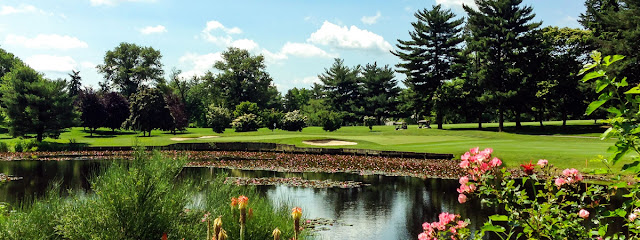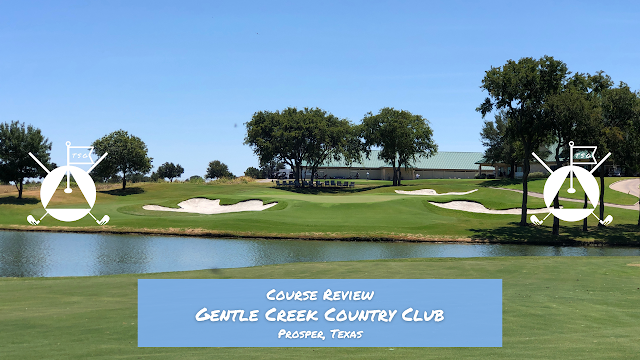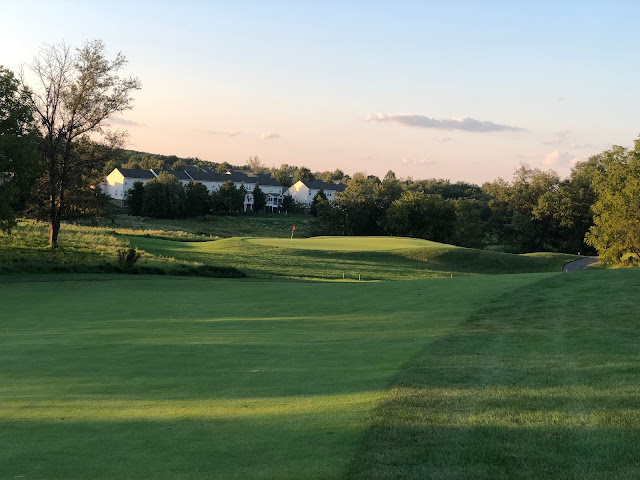Golf Course Review: The Suburban Club, Pikesville, Maryland
Pikesville, Maryland
November 22, 2022
OVERVIEW
YEAR OPENED: 1900
ARCHITECT: A.W. Tillinghast??? (R.B. Hyland & Peter Lees)
PAR: 70
COURSE LENGTH: 5,434 - 6,542
COURSE RATING: 68.5 - 72.5
COURSE SLOPE: 121 - 127
TEE OPTIONS: 5
LOCATION: Pikesville, Maryland
FACILITY TYPE: Private
Playing at Suburban is always a treat. Maybe I’m biased but I’m fortunate to call Suburban Club one of my Home Courses. From 2013-2015 I was the Assistant Professional at Suburban and returned in 2020 to help run their Junior Programs during the pandemic.
Suburban has a rich history. Founded in 1900, this Private club has largely flown under the radar despite being one of the first clubs founded in the country and one of the first golf courses built in Baltimore. I often get asked “where’s that?” when I tell people I’m playing Suburban.
Though listed in A.W. Tillinghast’s book as part of his portfolio, it is uncertain how much or how little involvement he really had in the design. I was able to speak with Mark Helffrich, Suburban’s Director of Golf of over 30 years who said they are still investigating the exact involvement Tillinghast had. What is known, is that R.B. Hyland built the original 9 holes in or around 1900/1901. A few years later, the club hired Tillinghast and his team to redesign the original 9 holes and expand the facility to an 18-hole championship course. Peter Lees, one of Tillinghast's shapers was said to be highly involved in building the course.
COURSE CONDITIONS RATINGS
FAIRWAYS: 4
GREENS: 4
BUNKERS: 4
PRACTICE FACILITIES: 4.5
SCENERY: 3
LAYOUT: 4
Suburban is always a treat to play, largely in part to their superintendent, Blake Murphy. Blake is one of the best supers in the region and is able to grow grass unlike anyone else I’ve met. Despite playing in mid-November after having a few touches of frost for the season, the conditions of the course were some of the best I played all year. The fairways were beautiful with barely any divots to be seen, the rough still lush and thick, bunkers manicured with proper sand, and greens firm and pure. Couple that with a classic 1900s design and a bag full of hickory golf clubs and you have yourself a perfect day.
That’s right. You didn’t misread that. After three decades as the Director of Golf, Mark Helffrich is finally retiring at the end of the year. I thought it would be nice for our final round at Suburban together, to use 100+ year-old hickories and ~50-year-old golf balls and play the course the way it was meant to be played.
If you’ve never played with hickories before, it’s very humbling. You realize very quickly how forgiving modern equipment is. You can no longer throw the ball in the air with lots of spin and let it land steeply and stick. Instead, the ball comes off flat, with very little spin. Oddly enough, irons tend to fly very straight. Woods, however, are very difficult to hit and rarely fly straight.
This means the game needs to be played differently than it would normally be played. Typically in American-style golf, you throw the ball in the air and carry it all the way to the target and use height and spin to get it to land softly. Links-style golf like what was predominantly played in the early 1900 hundreds with its UK roots is a game played on the ground. It’s about controlling trajectory and spin, landing the ball in the correct place to allow it to feed and funnel to the hole.
This is why I love playing hickories on old courses like Suburban because they were designed to be played that way. Nearly every green has an open front where you can run the ball up. And most greens are small and well-bunkered on all sides. It’s a reminder of the truth behind the definition of par. Par is defined as the score an accomplished golfer can attain on a hole. It doesn’t mean that players should get that score every time they play it though! It means you have to hit good shots to make par.
COURSE DIFFICULTY: 4
WALKABILITY: 4
Given its nature being 120 years old, The Suburban Club is a great walking course. The club even had a caddy program for most of its existence until a few years ago. The course is built along a central ridgeline with the front nine being played mainly on the west side of the ridge and the back nine is played mostly on the east side of the ridge. There are a couple of exceptions but this main topographical feature divides the property and creates most of the elevation change experienced when playing.
There is a central halfway house located near 8 green, 9 tee, 10 green, 11 tee, 12 green, and can be accessed one final time when playing 14. The “Oasis” as it’s called is where you can load up on snacks or use the restroom.
While the course isn’t that long on paper, and while the slope of the course doesn’t seem too difficult, this is a difficult course to score low on. I believe it’s mainly because of their small, subtle, well-protected, and fast greens. The first challenge is hitting the green in regulation. And if you do, you’re not in the clear yet. Firm, fast, and subtle, it can often surprise you to see the ball break the way it does. If you miss the green, hopefully, you brought your A-Game with wedges because you’re going to need it. The greens are tiny and well-protected so getting it close can prove to be difficult.
According to Mark, the official course record from the tips during a tournament round is -3 under par 67. As an example of how difficult the course can play, Fred Funk, before he was a household name, won a Mid-Atlantic event at Suburban Club with a score of even par! It was the only time in the history of that event that it was won with a score that wasn’t below par.
What I love so much about the course is that every time you play it, you get better. You learn something new, you understand where you can and cannot miss. And because the conditions are so nice, you’re able to attempt the shots necessary to get it close. Unlike some courses where you find yourself in a bad spot or where the grass isn’t quite growing properly, Suburban has a small footprint, settled on 130 acres which gives Blake and his team the opportunity to keep everything manicured, not just the fairways and greens. Because lets face it, we’re going to miss fairways and greens, and a sign of a great course is one where you still have a chance.
SUMMARY
OVERALL RATING: 3.92
Overall there are few places I enjoy playing more than Suburban Club. Part of it is the course, part of it are the practice facilities, and a large part are the people. Suburban will always be one of my home courses and like home, it’s filled with people you love catching up with. That, after all, is one of the great things about being at a private club is watching kids and families grow up, witnessing big life events, watching as one of your junior players makes it onto a college team, and surrounding yourself with people passionate about the game.
Located just a few miles from downtown Baltimore, yet far enough away from the city to have a slower pace of life, Suburban is a fantastic facility I suggest checking out if you’re looking for a new club to join.
I barely even scratched the surface of their amazing practice facilities which include a new state-of-the-art learning center, full-length driving range with two grass teeing areas with different grasses for different times of the year as well as mats for wintertime. They have a dedicated practice short game green, putting green, and an entire short game practice hole called “Old 17” where you can practice everything inside 120 yards on a real hole that is no longer part of the championship course design.
Add on top of that a fantastic tennis facility (Suburban was famous on the east coast for their tennis program) swimming pool, dining options, and more, and you have a great club perfect for the entire family.
MOVE BETTER - PLAY BETTER
COACH BLAINE ⛳🏌️♂️
For more, visit www.TourShotGolf.com





Comments
Post a Comment